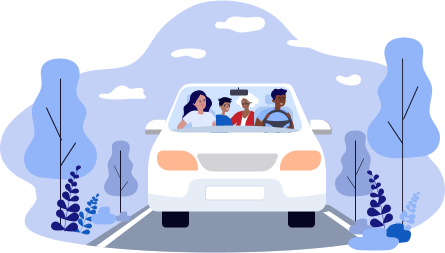You just bought your dream car — leather seats, backup camera, Bluetooth that actually works — and you were smart: you added full coverage insurance to protect it. So you’re good now, right?
Not so fast. There’s one financial trap that catches even savvy car buyers off guard — and it’s called the gap.
🚗 Full Coverage ≠ Full Protection
Let’s say your car gets totaled in an accident or stolen from the parking lot while you’re grabbing tacos. Your insurance steps in with what they call the actual cash value (ACV) — basically, what your car is worth today on the open market.
But cars are like new phones — they lose value the moment you drive off the lot.
If you financed your car, you could owe more on your loan than the car is worth. That difference? That’s the gap. And your “full coverage” doesn’t touch it.
💸 A Painful Real-World Example
-
You bought a new SUV for $40,000
-
You took a long loan — 72 months — with $0 down
-
A year later, it’s totaled in a storm
-
Insurance says the car is now worth $31,000
-
You still owe $36,000
-
Without gap insurance, you’re stuck paying $5,000 out of pocket… for a car you can’t even drive
Talk about salt in the wound.
🛡️ What Gap Insurance Really Does
Gap insurance steps in to cover the difference between your car’s value and your remaining loan or lease balance.
Think of it as the financial airbag for your car loan.
It’s not flashy. You don’t “see” it work unless the worst happens. But when it does? It can literally save your credit score, your savings, and your sanity.
🎯 Who Needs Gap Insurance?
You should seriously consider it if:
-
You leased your car (in fact, most leases require it)
-
You put down less than 20% when buying
-
You chose a long loan term (60+ months)
-
You financed extras like warranties, service plans, or taxes
-
Your car depreciates quickly — like many electric vehicles, luxury models, or high-mileage daily drivers
-
You’re not ready to cough up thousands if your car is totaled tomorrow
🧾 Where Do You Get It?
-
At the dealership (convenient, but often overpriced)
-
Through your insurer (many offer it for a few extra dollars/month)
-
From your lender or credit union (sometimes baked into your loan)
💡 Pro tip: If you got gap insurance when you bought the car, and now your loan balance is lower than your car’s value, you can usually cancel the coverage and stop paying for something you no longer need.
✅ Final Takeaway:
Full coverage protects the car.
Gap insurance protects you.
If your car’s worth less than your loan, you’re driving around with a financial time bomb. Gap insurance defuses it.

Save 20-50% on your car insurance today!
|
|